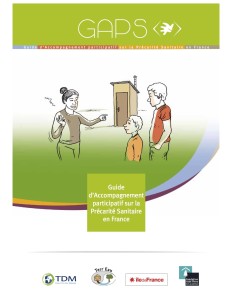Global Homeless Day: Toilet Solutions from France for the USA
“The restroom thus becomes a tool for figuring out just how a society functions – what it values, how it separates people from one another, and the kinds of trade-offs that come to be made,” says sociologist Harvey Moltoch. While we at PHLUSH believe in safe and accessible toilets for all people (families, children, those with health needs, the LGBTQ community, business people, the elderly, and those living on the street), statistics show certain US populations are increasingly excluded from safe and accessible toilets. Approximately 2.5 million to 3 million Americans are houseless each year, and almost 40 percent of them live outside. How does a lack of safe toilets impact them? What can be done to remedy these toilet exclusions?
 To commemorate Global Homeless Day, we feature two innovative French organizations. Their collaborative efforts are equally applicable here in the US. Toilettes Du Monde works to improve sanitation in France and abroad, and Terr’Eau focuses on dry and composting toilets in France. Together they created a guide to help houseless people in choosing and building toilets for their living locations. The GAPS manual encourages participatory techniques for assessing sanitation needs and constructing toilets with vulnerable communities. A similar approach could be used in the US, where the number of informal group camps is growing (dozens of cities with camps of more than 50 individuals) and the number of public toilets is decreasing. Two articles in the last week about tent cities in Dallas and Honolulu illustrate this challenge.
What is unique about the GAPs manual is the avoidance of a “turnkey” approaches for toilets. Organizations are encouraged to collaborate with vulnerable people to choose toilets that meet their needs not the organization’s needs. We have translated a small part of this manual, which asks readers the following questions, into English:
To commemorate Global Homeless Day, we feature two innovative French organizations. Their collaborative efforts are equally applicable here in the US. Toilettes Du Monde works to improve sanitation in France and abroad, and Terr’Eau focuses on dry and composting toilets in France. Together they created a guide to help houseless people in choosing and building toilets for their living locations. The GAPS manual encourages participatory techniques for assessing sanitation needs and constructing toilets with vulnerable communities. A similar approach could be used in the US, where the number of informal group camps is growing (dozens of cities with camps of more than 50 individuals) and the number of public toilets is decreasing. Two articles in the last week about tent cities in Dallas and Honolulu illustrate this challenge.
What is unique about the GAPs manual is the avoidance of a “turnkey” approaches for toilets. Organizations are encouraged to collaborate with vulnerable people to choose toilets that meet their needs not the organization’s needs. We have translated a small part of this manual, which asks readers the following questions, into English:
 To commemorate Global Homeless Day, we feature two innovative French organizations. Their collaborative efforts are equally applicable here in the US. Toilettes Du Monde works to improve sanitation in France and abroad, and Terr’Eau focuses on dry and composting toilets in France. Together they created a guide to help houseless people in choosing and building toilets for their living locations. The GAPS manual encourages participatory techniques for assessing sanitation needs and constructing toilets with vulnerable communities. A similar approach could be used in the US, where the number of informal group camps is growing (dozens of cities with camps of more than 50 individuals) and the number of public toilets is decreasing. Two articles in the last week about tent cities in Dallas and Honolulu illustrate this challenge.
What is unique about the GAPs manual is the avoidance of a “turnkey” approaches for toilets. Organizations are encouraged to collaborate with vulnerable people to choose toilets that meet their needs not the organization’s needs. We have translated a small part of this manual, which asks readers the following questions, into English:
To commemorate Global Homeless Day, we feature two innovative French organizations. Their collaborative efforts are equally applicable here in the US. Toilettes Du Monde works to improve sanitation in France and abroad, and Terr’Eau focuses on dry and composting toilets in France. Together they created a guide to help houseless people in choosing and building toilets for their living locations. The GAPS manual encourages participatory techniques for assessing sanitation needs and constructing toilets with vulnerable communities. A similar approach could be used in the US, where the number of informal group camps is growing (dozens of cities with camps of more than 50 individuals) and the number of public toilets is decreasing. Two articles in the last week about tent cities in Dallas and Honolulu illustrate this challenge.
What is unique about the GAPs manual is the avoidance of a “turnkey” approaches for toilets. Organizations are encouraged to collaborate with vulnerable people to choose toilets that meet their needs not the organization’s needs. We have translated a small part of this manual, which asks readers the following questions, into English:
- Do you agree with the idea that you are not going to find a recipe in this guide?
- Are you willing to reconsider your views on the issues which you have identified for action?
- Can you accept that the people with whom you are working may express needs different from the ones you see?
- Do you agree that the priority is to consider the needs of those vulnerable rather than yours?
- Don’t you think that solutions can come from vulnerable people themselves?
- Can your role essentially be listening ears and helping hands?
- Do you acknowledge that the urgent and precarious situation that these people find themselves within is not a hindrance to engaging them in a participatory process?
